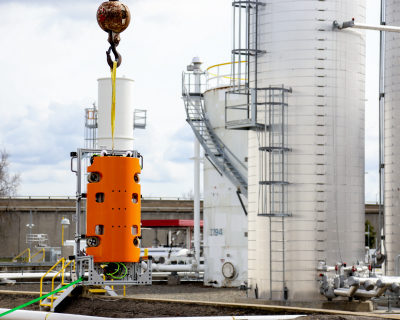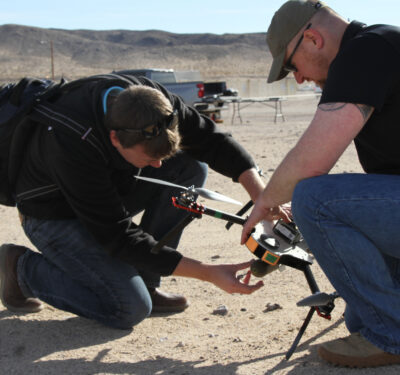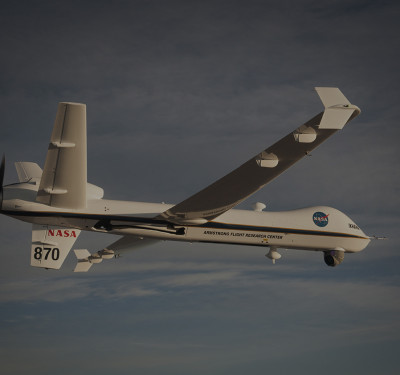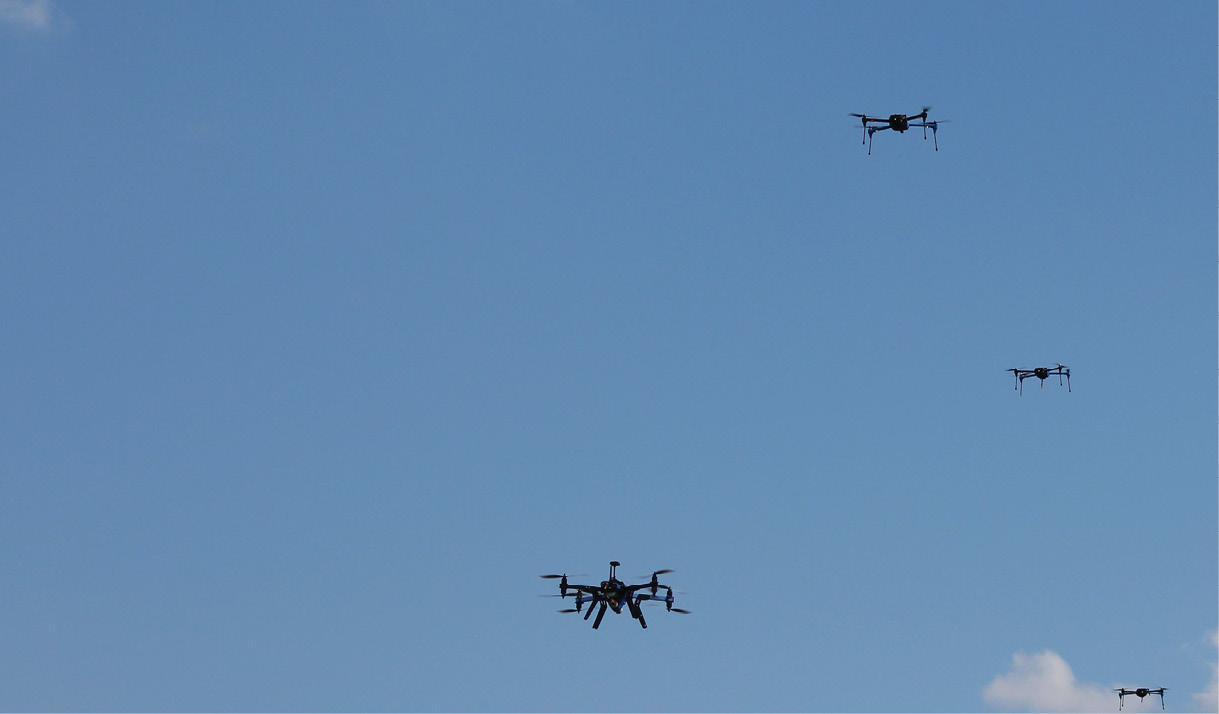 I’m convinced that NASA’s Unmanned Traffic Management (UTM) system is absolutely key to safe UAS operation in our country. I believed so from NASA’s first UTM conference last year in California and was therefore very eager to attend this year’s UTM conference in Syracuse, NY. Last year, the FAA wasn’t enthusiastic about UTM and I could detect a real “not invented here” vibe among the FAA folks who attended. The FAA didn’t like NASA telling them how to manage air traffic. All I can say is—“Wow. What a difference a year makes!”
I’m convinced that NASA’s Unmanned Traffic Management (UTM) system is absolutely key to safe UAS operation in our country. I believed so from NASA’s first UTM conference last year in California and was therefore very eager to attend this year’s UTM conference in Syracuse, NY. Last year, the FAA wasn’t enthusiastic about UTM and I could detect a real “not invented here” vibe among the FAA folks who attended. The FAA didn’t like NASA telling them how to manage air traffic. All I can say is—“Wow. What a difference a year makes!”
The mood at the Syracuse UTM conference was completely different. Nearly every panel was a joint NASA/FAA/industry arrangement. Rather than keeping UTM at arm’s length, the FAA now has a joint Research Transition Team headed by some real experts. Sherri Magyarits at FAA was a lead concept developer for NextGen and has been working UAS for about five years. Joe Rios at NASA Ames is one of PK Kopardekar’s top researchers and UTM program lead for NASA (PK is the Godfather of UTM). There’s a Global UTM Association dedicated to establishing worldwide UTM standards. The research is starting to pile in—NASA has a firm research plan for UTM and the FAA’s ASSURE Center of Excellence for UAS is working two projects to provide research for solid policy decisions. The standards organizations have been hard at work also; they’re on the verge of releasing a “well clear” definition for small UAS, as well as working hard on Beyond Line of Sight (BLOS) standards.
So what happened? Why the change at FAA? We could blame it on Congress. Congressional budget language was clear that NASA and the FAA must work together to develop UTM and the language prompted the aggressive FAA/NASA timeline. They’ll have a research plan by January 2017, a pilot program by April 2017 and execute between March of 2017 and 2020. I’m not sure I believe Congress was completely behind the change though. Let’s admit it; the Executive Branch is good at finding excuses to delay Congressional deadlines. Remember how UAS were supposed to be “fully integrated into the National Airspace System” by 2015?
I think aggressive action by FAA Administer Michael Huerta played a big role in the change. Despite distractions with privatizing air traffic, NextGen and airline security, Administer Huerta got personally involved in UAS about a year ago and his drive made a huge difference. He set up a Drone Advisory Council and then gave borderline impossible deadlines to his team on Part 107, operations over people standards, micro UAS standards and UTM. The Administer realized NASA UTM was a great idea and made it clear that it’s OK to take great ideas from others.
Additional senior leadership provided by Maj Gen (ret) Marke (Hoot) Gibson and Earl Lawrence made a big difference. They built on a great foundation provided by Jim Williams, but Jim was by himself and had to struggle for every resource he got. The combination of Hoot working directly for the Deputy Administrator to handle UAS issues external to the FAA and Earl working inside the FAA turned Jim Williams’ truly impossible job into two really, really tough jobs with much more impact. The fact that Jim, Hoot and Earl are all “big picture,” collaborative leaders fundamentally enabled FAA acceptance of UTM.
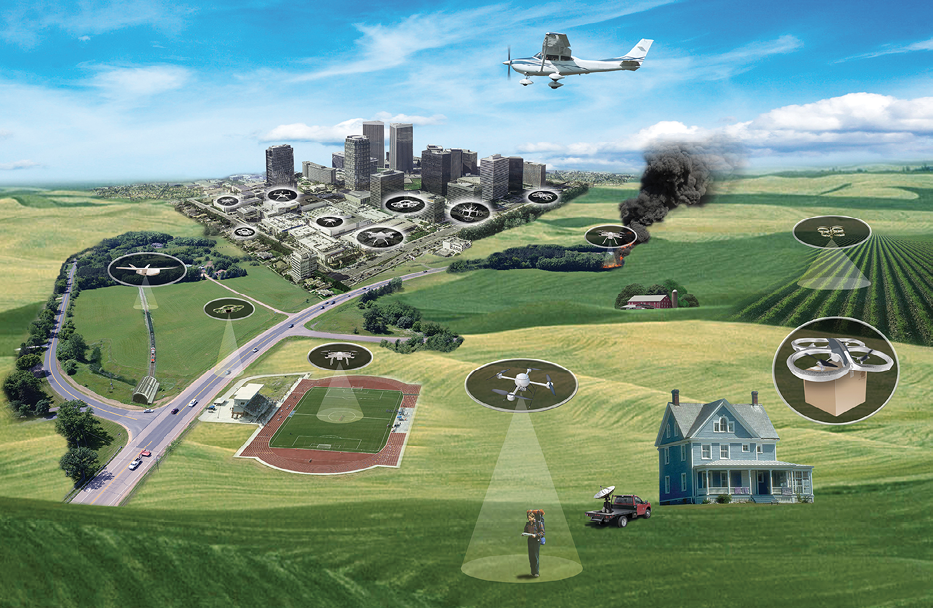 However, the biggest impact came from reality settling in on the FAA’s Air Traffic (AT) organization and their acceptance of UTM as a commercial enterprise. I know lots of folks bash the FAA over UAS, but you must look at UAS from the FAA’s perspective. Our air traffic system is overloaded as is. Congress hasn’t given the FAA a significant increase in controller manning in years. Congressional proposals to privatize AT funding have only added to their stress. True, the expected efficiencies from NextGen are being realized, but are just being erased by ever increasing airline traffic. If you had an air traffic control system that struggled to do 10,000 simultaneous flights, would you want to increase that figure a thousand-fold with UAS? What about providing radar coverage for non-cooperative targets below 400 feet? The FAA left the air surveillance radar business for ADS-B tracking years ago and even then, the old radar surveillance system just tracked Cessna-sized targets above 10,000 feet. UTM’s Ground Based Sense and Avoid (GBSAA) algorithms need radars that can track bird-sized targets below 400 feet. Who is going to pay for all those radars?
However, the biggest impact came from reality settling in on the FAA’s Air Traffic (AT) organization and their acceptance of UTM as a commercial enterprise. I know lots of folks bash the FAA over UAS, but you must look at UAS from the FAA’s perspective. Our air traffic system is overloaded as is. Congress hasn’t given the FAA a significant increase in controller manning in years. Congressional proposals to privatize AT funding have only added to their stress. True, the expected efficiencies from NextGen are being realized, but are just being erased by ever increasing airline traffic. If you had an air traffic control system that struggled to do 10,000 simultaneous flights, would you want to increase that figure a thousand-fold with UAS? What about providing radar coverage for non-cooperative targets below 400 feet? The FAA left the air surveillance radar business for ADS-B tracking years ago and even then, the old radar surveillance system just tracked Cessna-sized targets above 10,000 feet. UTM’s Ground Based Sense and Avoid (GBSAA) algorithms need radars that can track bird-sized targets below 400 feet. Who is going to pay for all those radars?
Commercialization is always a touchy subject at the FAA, particularly within AT. The FAA is always hesitant to “give” on commercialization lest it lead to loss of the entire AT organization. However, this time I think reality hit and the FAA realized commercialization of UTM and its attendant GBSAA sensors is the only way to move forward. Part 107 is out and it’s been a resounding success. Drones aren’t going away. Better to get their traffic management system right from the start.
Therefore, I’m predicting UTM will continue at this blistering pace. UTM will successfully transition from NASA to the FAA. The FAA will continue developing beyond line of sight (BLOS) rules as the research comes in and they will require GBSAA sensor coverage coupled with UTM for part 107 BLOS waivers for a wide variety of UAS operations. The FAA will commercialize both UTM and GBSAA sensor coverage. In the future, commercial UAS operators will pay a tiered subscription fee to a commercial UTM vendor. A basic fee will cover the traffic management portions of UTM; geofencing, flight monitoring, etc. They’ll be a higher fee for BLOS operations requiring GBSAA coverage. A smart vendor will also package data link relay into this deal.
The only area that gave me pause at the Syracuse conference was cyber security. The organizers did a great job at paying attention to cyber and providing some great panelists. They made some great points—cyber security must be built in at the start, 87% of cyber security breaches come from software flaws, each UAS needs an “indisputable address” to fly. The problem was, I didn’t see much action on cyber standards, cyber management organizations or even an appreciation of how hard cyber security will be for UAS. I’ll dedicate a whole article to UAS cyber security later, but keep in mind UAS security is a lot harder than either manned aircraft security or Internet security. UAS must communicate outside their data bus. They must communicate with a ground based network to enable UTM. A wide range of users using a variety of connection methods will soon have access to a system that accesses most commercial UAS flying in this country, plus detailed radar coverage of much of the nation. How do we stop hackers from accessing flying UAS? How do we stop Russian or Chinese intelligence from just buying a UTM subscription to get radar coverage of the U.S.?
Perhaps the most concerning comment about UTM cyber security compared it to the early days of the Internet. The reasoning was the Internet was another government research project that transitioned to commercial use with great success without much government intervention. Our country writes off millions of dollars daily because we took an open, self-healing communications network designed to survive nuclear war and based our economy on it. The Internet was never designed with security in mind. You can’t positively identify users on the Internet. Attributing malicious activity on the Internet often requires massive resources from the FBI, NSA and their foreign partners. We’re at the perfect stage with UTM to learn from Internet security and introduce real cyber security with attributable actions and certified participants.
The Syracuse UTM conference was more proof that UTM is here to stay. The FAA and NASA are serious about transitioning UTM into FAA-approved UAS operations. I’m very sure the FAA will turn over UTM to a commercial provider because it’s the only affordable way to field UTM with the sensors it needs to keep our skies safe. If the FAA and NASA put cyber security at the top of the “To-Do” list for UTM, we’ll have a safe, affordable UAS traffic management system.


